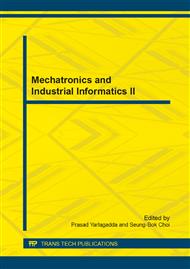[1]
Wang Xifan. Power system optimal planning [M]. Beijing: water conservancy electric power press, (1990).
Google Scholar
[2]
Li Xiaolei. A new type of artificial intelligence optimization method of artificial fish algorithm [D], Zhejiang: Zhejiang university, (2003).
Google Scholar
[3]
Li Xiaolei, Shao Zhijiang, Qian Jixin. An optimization model based on animal commune fish algorithm [J]. Journal of systems engineering theory and practice, 2002, 22 (11) : 32 to 38.
Google Scholar
[4]
Xiong Xinyin, Wu Yaowu. Genetic algorithm and its application in power system [M]. Wuhan: Huazhong university of science and technology press, (2002).
Google Scholar
[5]
Tang Jiandong, Xiong Xinyin, Wu Yaowu etc. Electric power system reactive power optimization based on artificial fish algorithm [J]. Journal of relay, 2004, 32 (19) : 12-15.
Google Scholar
[6]
Zhang Meifeng. Artificial fish the improvement and application of intelligent optimization algorithm research [D], Dalian, Dalian university of technology, (2008).
Google Scholar
[7]
Zhou Hongwei. premature, phenomenon and the improved genetic algorithm (ga) strategy research [D], Henan: PLA information engineering university, (2004).
Google Scholar
[8]
Pan Xiong. Optimization of transmission network planning method research [D]. Chongqing: chongqing university, (2002).
Google Scholar
[9]
Luo Jun. Wind turbines in distribution network reactive power optimization research [D], Hunan: Hunan university, (2009).
Google Scholar
[10]
Zhang Yanli. Wind farm reactive power compensation based on ant colony algorithm [D], Beijing: Beijing Jiaotong university, (2009).
Google Scholar
[11]
Ceng Xuejiang. Wind turbines in power distribution network reactive power optimization and algorithm research [D], Chengdu: southwest Jiaotong university, (2011).
Google Scholar
[12]
Golshan, M.E. H; Arefifar, S.A. Distributed generation reactive sources and network-configuration planning for power and energy-loss reduction. IEE Proceedings: Generation, Transmission and Distribution, 2006, 143(2): 127-136.
DOI: 10.1049/ip-gtd:20050170
Google Scholar
[13]
Delfanti M; Granelli G P; Marannino P, et al. Optimal capacitor placement using deterministic and genetic algorithms[J], IEEE Trans on Power Systems, 2000, 15(3): 1041-1046.
DOI: 10.1109/59.871731
Google Scholar
[14]
Patel M R. Wind and solar power systems design, analysis and operation[M]. CRC Press, (2008).
Google Scholar


